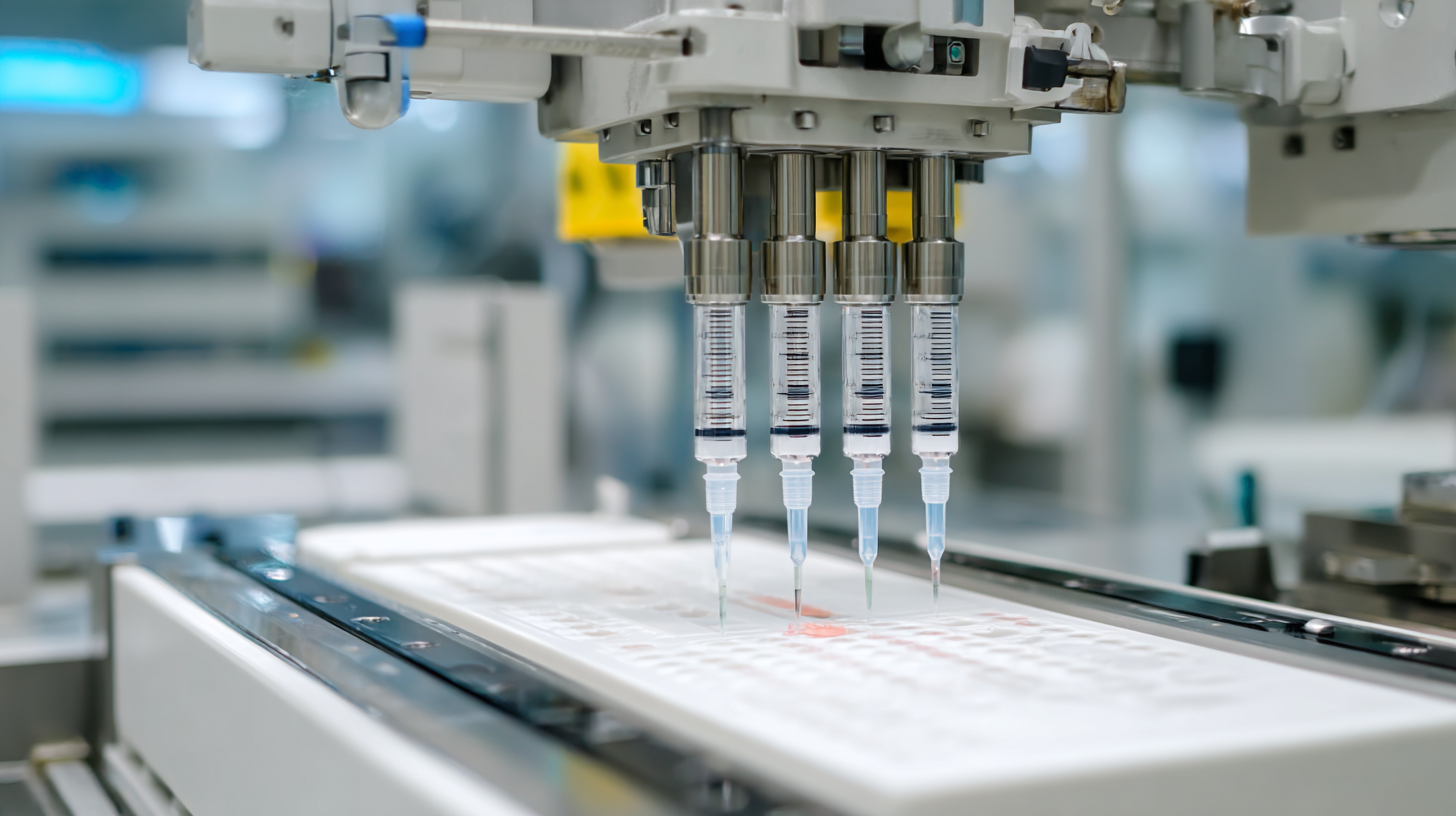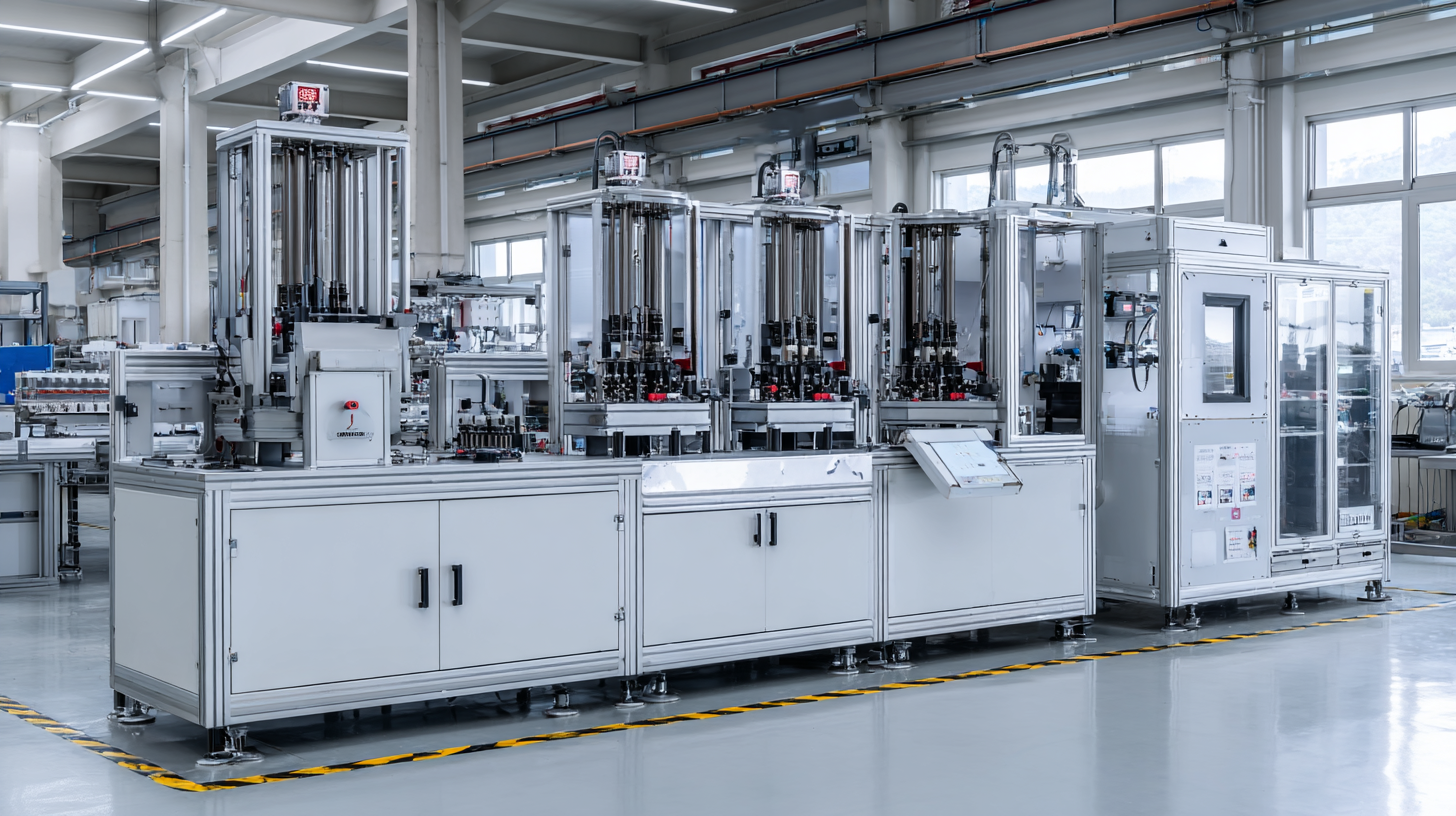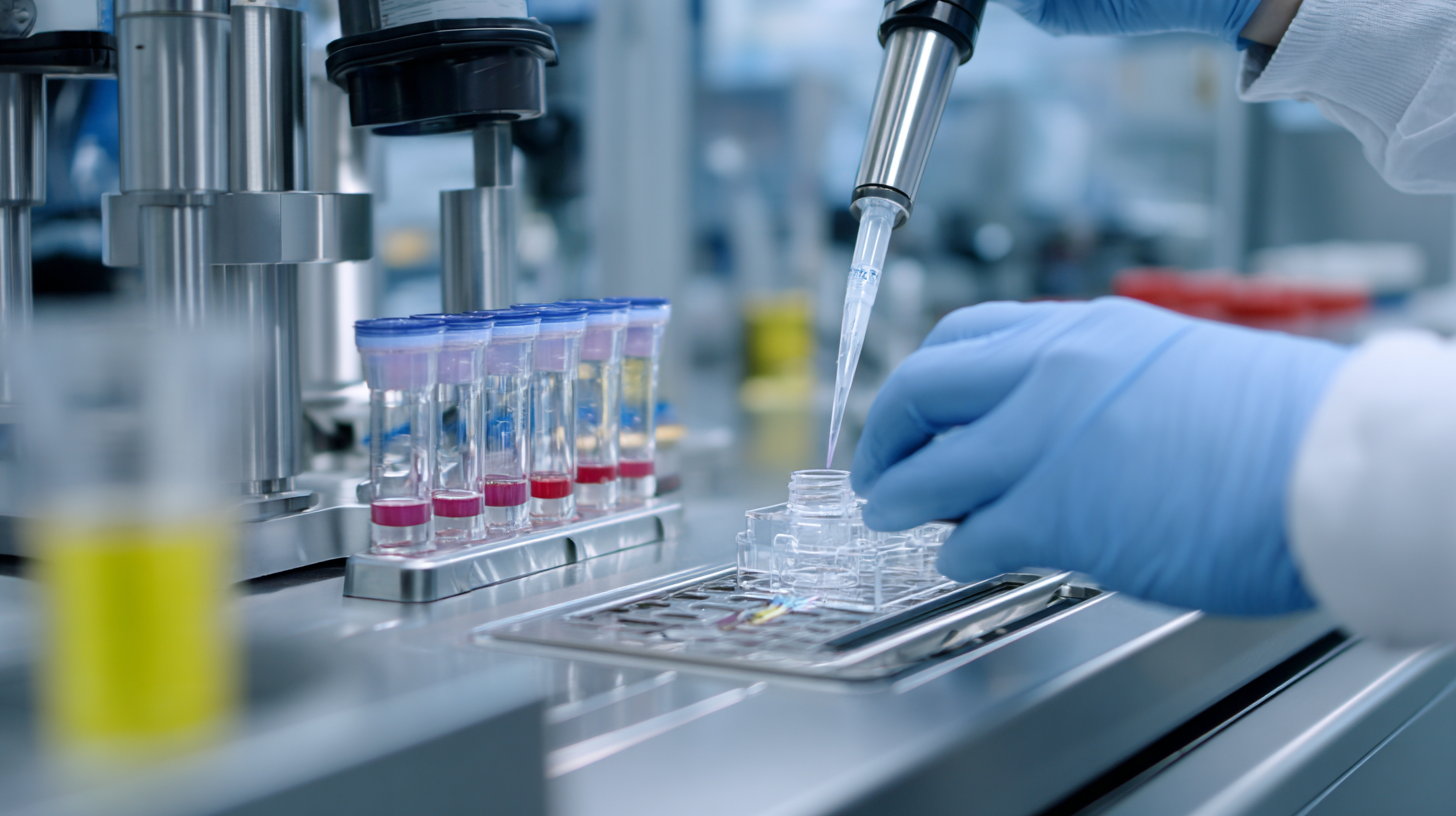Automated Dispensing Robot Videos
A World of Robotic Dispensing and Assembly SolutionsWhat is the Importance of Best Silicone Dispensing Equipment in Modern Manufacturing
 In the rapidly evolving landscape of modern manufacturing, the role of advanced technologies is more critical than ever, particularly in the realm of material handling and application. One such essential innovation is Silicone Dispensing Equipment, which has emerged as a game-changer in various industries, from automotive to electronics. The ability to dispense silicone with precision and efficiency not only enhances product quality but also streamlines production processes, ultimately leading to greater profitability. As manufacturers strive to meet growing demands for high-performance products, investing in the best silicone dispensing equipment becomes a strategic necessity. This blog will explore the importance of silicone dispensing equipment, discussing how it can drive innovation and efficiency in manufacturing, while providing insights into its future developments and applications.
In the rapidly evolving landscape of modern manufacturing, the role of advanced technologies is more critical than ever, particularly in the realm of material handling and application. One such essential innovation is Silicone Dispensing Equipment, which has emerged as a game-changer in various industries, from automotive to electronics. The ability to dispense silicone with precision and efficiency not only enhances product quality but also streamlines production processes, ultimately leading to greater profitability. As manufacturers strive to meet growing demands for high-performance products, investing in the best silicone dispensing equipment becomes a strategic necessity. This blog will explore the importance of silicone dispensing equipment, discussing how it can drive innovation and efficiency in manufacturing, while providing insights into its future developments and applications.
Role of Silicone Dispensing Equipment in Enhancing Manufacturing Efficiency
In modern manufacturing, the role of silicone dispensing equipment is pivotal in enhancing efficiency across various industries. According to a report by the Adhesive and Sealant Industry (ASI), companies utilizing advanced dispensing technology have reported productivity increases of up to 30%. This improvement is largely attributed to the precision and consistency that silicone dispensers provide, allowing for precise material application that reduces waste and optimizes process time. Enhanced accuracy in dispensing means that manufacturers can achieve tighter tolerances, leading to better product quality and reduced rework costs.
Furthermore, the silicone dispensing equipment's automation capabilities contribute significantly to operational efficiency. A study by the Manufacturing Institute revealed that automation in material handling and dispensing could decrease cycle times by 25-40%. This speed not only accelerates production but also allows for scalability in operations, accommodating fluctuating demand without sacrificing quality. As industries continue to seek ways to streamline processes and improve output, the strategic investment in silicone dispensing technology emerges as a critical factor in maintaining competitive advantage in the ever-evolving manufacturing landscape.
Key Advantages of Using High-Quality Silicone Dispensing Tools
In modern manufacturing, high-quality silicone dispensing tools are essential for achieving precision and efficiency. These tools allow manufacturers to control the flow and application of silicone with remarkable accuracy, reducing waste and ensuring consistent product quality. According to a recent industry report, the silicone dispensing equipment market is projected to grow by 5.2% annually, reflecting a rising demand for advanced manufacturing processes that require meticulous material handling. This demand is driven by applications in sectors such as electronics, automotive, and medical devices, where the reliability of silicone adhesives and sealants is crucial.
One of the key advantages of using state-of-the-art silicone dispensing equipment is the ability to implement moldless lens manufacturing techniques. Recent innovations in droplet dispensing technology enable manufacturers to produce high-resolution imaging systems with a focus on precision pressure control. This capability not only enhances the quality of the end product but also streamlines the production process, minimizing the risk of defects. As silicone materials become increasingly vital in numerous applications, investing in top-notch dispensing tools is no longer just an option but a necessity for staying competitive in the fast-evolving manufacturing landscape.
What is the Importance of Best Silicone Dispensing Equipment in Modern Manufacturing - Key Advantages of Using High-Quality Silicone Dispensing Tools
| Advantages | Description | Impact on Manufacturing |
|---|---|---|
| Precision Dispensing | Allows for accurate application of silicone materials | Reduces waste and improves product quality |
| Time Efficiency | Faster dispensing speeds streamline production processes | Increases overall production output |
| Consistency | Ensures uniform application across all products | Enhances product reliability and customer satisfaction |
| Versatility | Suitable for various types of silicone materials | Adaptable to different manufacturing needs |
| Reduced Labor Costs | Minimizes the manual input required for dispensing | Allows reallocation of labor to more critical tasks |
Impact of Silicone Dispensing Technology on Product Quality and Consistency
In modern manufacturing, the application of silicone dispensing technology plays a crucial role in enhancing product quality and consistency. With precise control over the dispensing process, manufacturers can achieve accurate measurements of silicone materials, ensuring the right volume is applied every time. This level of precision minimizes waste and reduces the likelihood of defects caused by over or under-dispensing, ultimately leading to higher quality end products.

Tips for achieving optimal results with silicone dispensing equipment include regularly calibrating your machines to maintain accuracy and keep a close eye on environmental conditions such as temperature and humidity. These factors can significantly influence the curing process and the overall performance of silicone materials. Additionally, incorporating automated dispensing systems can further enhance consistency by reducing human error and streamlining production workflows.
Investing in high-quality silicone dispensing equipment not only improves operational efficiency but also contributes to maintaining a high standard of product quality. By ensuring consistency in the application, manufacturers can build trust with their customers, knowing that each product will meet the established specifications and performance criteria.
The Evolution of Silicone Dispensing Equipment in Modern Industry
The evolution of silicone dispensing equipment has significantly transformed modern manufacturing processes across various industries. Initially, the application of silicone was a labor-intensive task that relied heavily on manual operations. However, as technology progressed, the need for precision, speed, and consistency drove innovations in dispensing equipment. Today, automated systems equipped with advanced control mechanisms allow manufacturers to dispense silicone with remarkable accuracy, reducing waste and enhancing production efficiency.

Moreover, the introduction of various dispensing techniques—such as volumetric and metered dispensing—has enabled manufacturers to optimize their use of silicone, catering to specific applications ranging from automotive assembly to electronics encapsulation. As industries continue to demand higher performance and reliability, manufacturers increasingly rely on state-of-the-art silicone dispensing equipment to ensure that their products meet stringent quality standards. This evolution not only illustrates the importance of silicone in critical applications but also highlights how modern manufacturing continues to adapt and thrive in a competitive landscape through technological advancements.
Global Trends in Silicone Dispensing Techniques and Their Economic Implications
The landscape of manufacturing is rapidly evolving, and silicone dispensing techniques are at the forefront of this transformation. As industries increasingly rely on silicone for various applications—from automotive to electronics—there is a growing demand for advanced dispensing equipment that ensures precision and efficiency. Modern silicone dispensing methods, such as automated robotic systems and accurate volumetric dispensing technologies, are being adopted to enhance productivity and reduce waste. These trends not only streamline manufacturing processes but also facilitate the scalability of production, positioning companies to meet the rising consumer demands.
Economic implications of these trends are noteworthy. As manufacturers invest in advanced silicone dispensing technologies, they benefit from reduced labor costs and minimized material wastage, leading to more competitive pricing strategies. Moreover, the integration of these techniques often results in faster production cycles, allowing businesses to respond quickly to market changes and consumer needs. This adaptability can significantly enhance a company's market share and profitability, highlighting the critical role that innovative dispensing equipment plays in the broader economic landscape of modern manufacturing.
